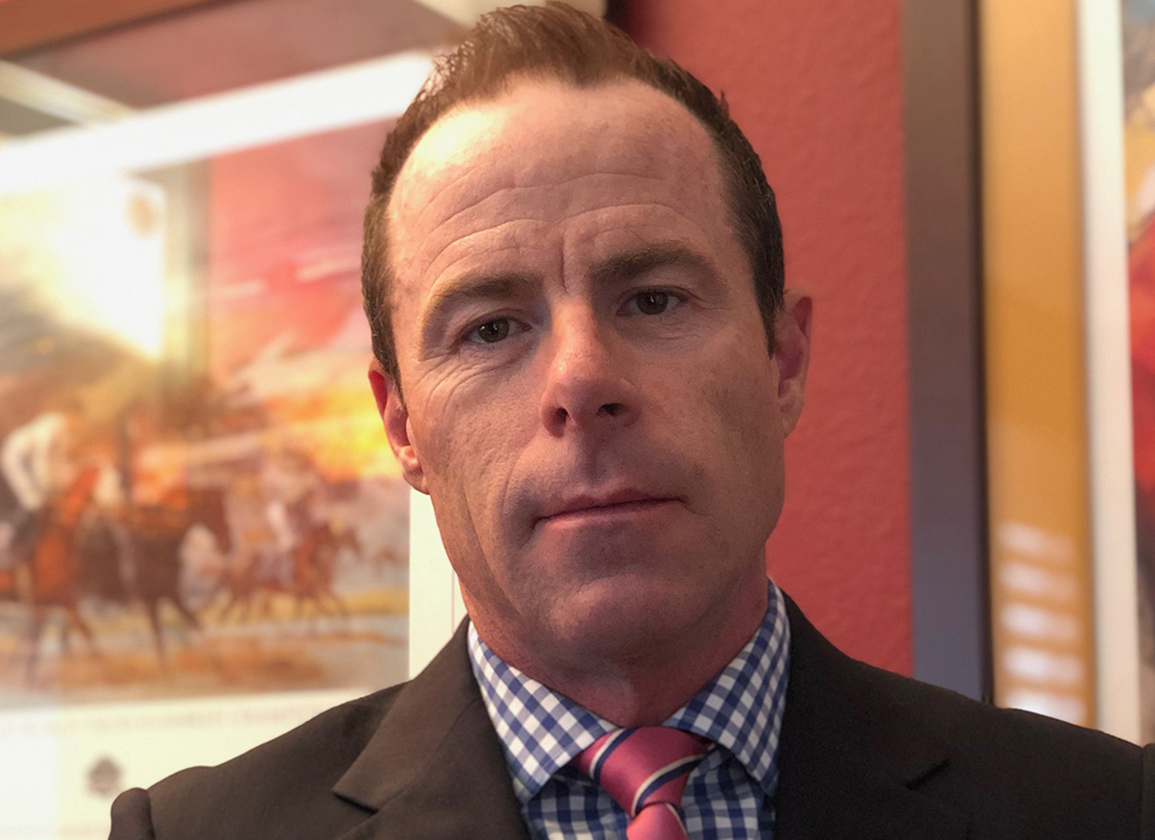Newly minted California Horse Racing Board (CHRB) member, Thomas Hudnot–an education consultant and a former racehorse owner–enjoyed a relatively smooth landing on his first public day on the job, with few of the highly combustible topics on the monthly commission meeting agenda that have lit the touch paper during any number of board meetings these past few years.
The meeting, however, did signal a potential brewing storm in the shape of the Horseracing Integrity and Safety Act's scheduled implementation of its racetrack safety rules July 1.
CHRB executive director, Scott Chaney, pointed out that HISA's crop rules–which allow for overhand use of the whip–are more permissive than those currently in place in California, which prohibits use of the whip above the shoulder.
Furthermore, HISA's Anti-Doping and Medication Control program, which is set to go into effect early next year, currently restricts the administration of pre-race mediations to 24 hours, in contrast to the CHRB's 48-hour cut-off.
These two areas give Chaney cause for “concern,” he said, adding that he is in frequent communication with the new CEO of the Horseracing Integrity and Safety Authority–the broad non-profit umbrella established by HISA and commonly referred to as just the “Authority”–to find a solution to these issues “which are frankly non-starters for California.”
“I am hopeful that we can reach a resolution in which there will not be any loosening of the rules already in place here,” said Chaney.
Chaney also broached the prickly issue of HISA's cost, saying that “the current reg's require that they provide the amount of California's contribution by Apr. 1.” Before then, he added, the CHRB will begin negotiations with the Authority to conduct as many of the functions under the new federal rules as the law permits.
Needless to say, Chaney said, “this implementation is very fluid, and will require both the Authority and the CHRB to be flexible as we both seek to promote human and animal welfare.”
Earlier in the meeting, California Thoroughbred Trainers (CTT) executive director, Alan Balch, provided a status update on the accident prevention taskforce created late last year to systematically study the myriad factors behind fatal equine injury.
The key component of Balch's presentation concerned shoulder fractures–a common cause of catastrophic injury in racehorses.
These types of injuries have long bedeviled veterinarians and trainers due to their subtlety of visible symptoms, and the sheer difficulty of diagnosing them prior to a catastrophic breakdown occurring.
“As you know, if we could eliminate shoulder fractures, our safety record would improve even more significantly,” said Balch.
One especially high-risk group of horses said Balch–floating the findings of a nationwide statistical survey performed by The Stronach Group chief veterinarian, Dionne Benson–are those returning to training from lay-offs.
“Generally, the factors are lay-offs of 90-days or more,” said Balch, “and possibly a premature return to serious training once they've returned to the track or an auxiliary facility.”
In short, explained Balch, the general understanding in the equine medical world is that in horses returning to training after a break, the musculature develops faster than the bone can remodel, and that horses can appear outwardly fit enough to handle a degree of exercise greater than the bone is able to withstand.
And so, what's to be done?
California trainers are required to routinely complete continuing education courses, covering a variety of topics from track surfaces to pre-race examinations, as well as those on shoulder fractures.
Most California trainers have completed the shoulder-related module, but not all, admitted Balch. In response, the CHRB discussed a variety of amendments to the rules to potentially mandate completion of the module, including making it a prerequisite for re-licensing.
In the meantime, the CTT will contact over the next 30 days all trainers who have skipped the online course to encourage them to complete it, said Balch.
More broadly, the aim of the accident taskforce “is to provide a statistically sound guide, perhaps even by way of a rule based on verified evidence, of steps which must be taken before a horse returning from a lay-off of a specified period can gallop or work at speed,” Balch explained.
During a report about the prior day's pari-mutuel and wagering committee meeting, commissioner Dennis Alfieri explained how the Xpressbet wagering platform has developed a technology allowing gamblers to select an alternative primary selection in multi-race wagers–such as a pick four, pick five, or pick six–in the event their primary pick is a late scratch.
The new feature was launched to online customers in mid-February, said Alfieri.
The technology was developed in response to the Modern Games debacle at last November's Breeders' Cup Juvenile Turf, when a veterinarian prematurely scratched the horse, only for the Godolphin runner to be reinstated into the race for purse-money only.
Modern Games ultimately won the race, with winning returns going to the second-place finisher, Tiz the Bomb. And while many multi-race gamblers who selected Modern Games automatically received the eventual favorite, Dakota Gold, instead, that horse eventually finished out of the frame in fifth.
Alfieri explained that Chaney had suggested at the pari-mutuel and wagering committee meeting that the CHRB make this wagering option a condition of licensure for other betting platforms when their licenses are up for renewal.
Not a subscriber? Click here to sign up for the daily PDF or alerts.






